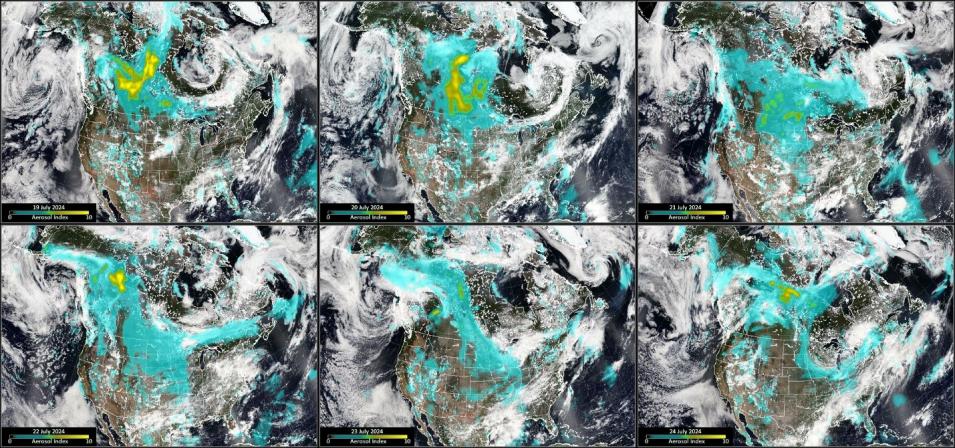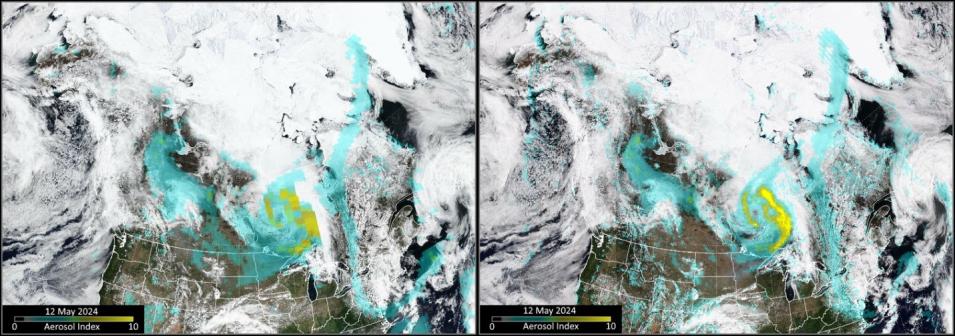As spring turned to summer, fires in western Canada continued to increase in intensity. A series of pyrocumulonimbus (pyroCb) events in western Canada that occurred July 19-24, 2024, contributed to a vast amount of smoke that is affecting much of Canada and a large part of the Midwestern United States.
PyroCbs are thunderstorms that are created or enhanced by wildfires. They can lift large plumes of smoke high into the air, often reaching the stratosphere. These smoke plumes can travel long distances, affecting air quality thousands of kilometers from their sources. The location and movement of these plumes can be monitored from space using measurements acquired by instruments such as the Ozone Mapping and Profiler Suite (OMPS) aboard the NASA/NOAA Suomi National Polar-orbiting Partnership (Soumi NPP), NOAA-20, and NOAA-21 satellites.
While OMPS was primarily designed to measure atmospheric ozone, it also can be used to detect atmospheric aerosols such as volcanic ash, dust, and smoke. One particular OMPS product, the Aerosol Index (AI), is extremely useful for monitoring and tracking the movement of such aerosols because it can detect them over any type of land surface (including ice) and in clouds.
In the series of images below spanning July 19 (upper left image) to July 24 (lower right image), NOAA-21 OMPS AI measurements are shown with true-color imagery from the NOAA-21 Visible Infrared Imaging Radiometer Suite (VIIRS) instrument. Higher AI values are indicated in yellow/dark yellow and represent higher density (and altitude) smoke.

